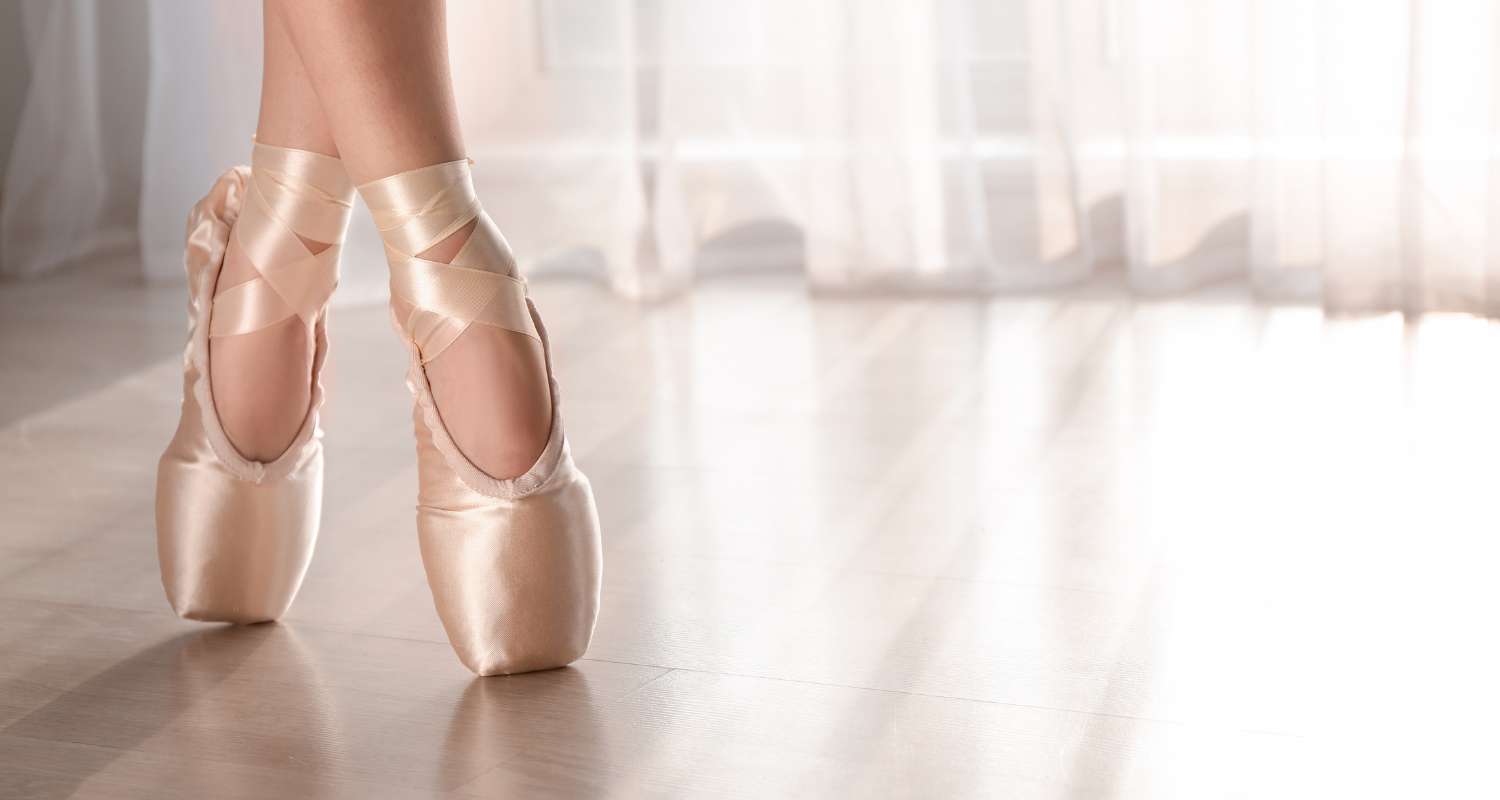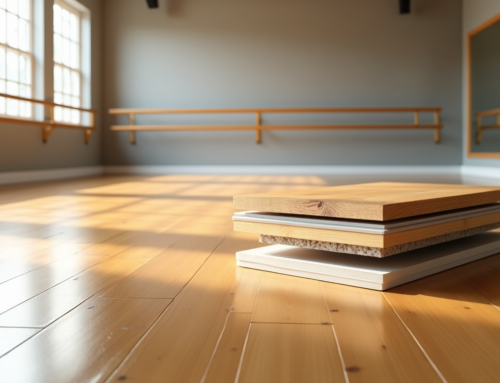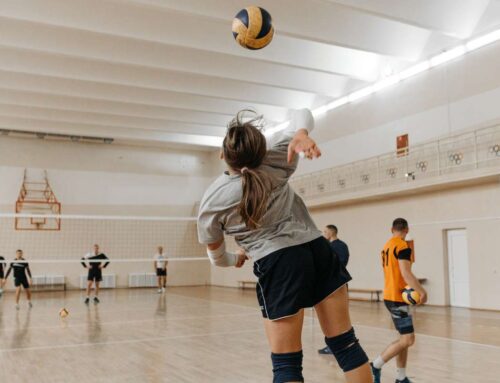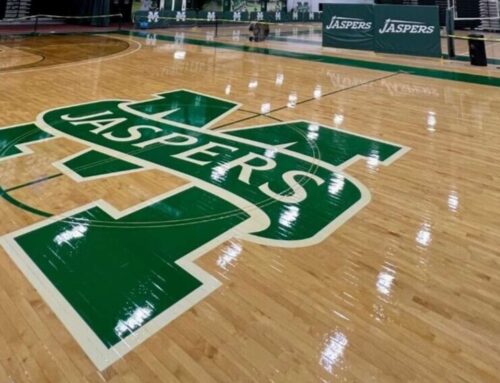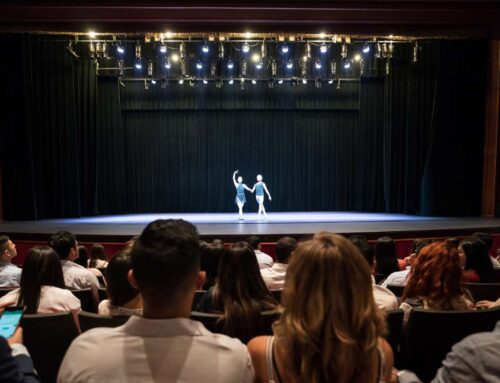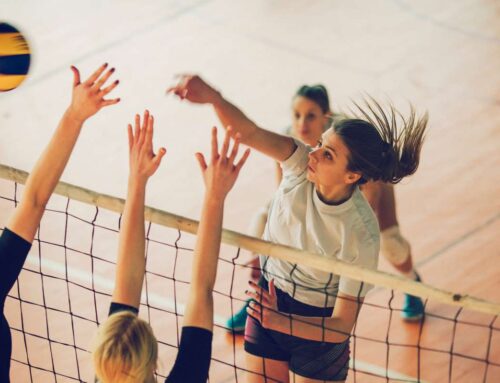Essential Dance Floor Maintenance Tips for Long-Lasting Performance
Maintaining performing arts flooring is similar to gym floor maintenance—its upkeep depends on usage. Schools and facilities should budget for annual maintenance to keep their floors in optimal condition. Key maintenance practices include regular dry mopping, annual screen and coat applications, and protecting floors from external elements like sidewalk salt, dirt, and debris. This article highlights the benefits of proper maintenance and outlines the best procedures for preserving dance floors.
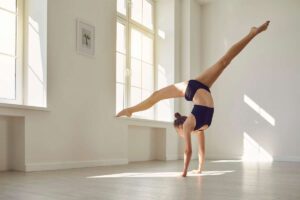 Types of Dance Floors and Their Specific Maintenance Needs
Types of Dance Floors and Their Specific Maintenance Needs
There are only a few types of dance floor surfaces commonly used in our service areas, making maintenance relatively straightforward. However, flamenco and tap dancing can be particularly damaging to floor surfaces. Facilities that host these styles of dance should invest in temporary protective measures, such as hardboard sheets or semi-permanent marley flooring. Without proper protection, wood floors are at risk of damage.
Sprung Wood Dance Floors
- Daily dry mopping is essential to remove dust and debris.
- Ideally, dance studios should keep outside contaminants off the floor, but this is not always practical.
- Annual recoating by a professional contractor helps maintain the finish, ensuring optimal slip resistance and sheen.
- Protect piano wheels and heavy equipment by using floor protection in their path of movement.
Vinyl Dance Floors (Marley Floors)
- Marley floors are sacrificial surfaces, meaning they are designed to be replaced over time due to dents, scratches, and divots.
- Always use manufacturer-recommended dance floor cleaners to maintain the integrity of the dance flooring.
- Marley is popular due to its durability, but proper care is essential. Tightening screws on tap shoes and avoiding sharp objects will help extend the life of the vinyl floor.
Stages
- Stage floors require regular recoating and refinishing, similar to studio wood floors.
- Extra care is needed for heavy rolling loads, such as pianos, background sets, and stage equipment.
- Protecting subfloors is crucial—use plywood sheets under heavy items to distribute weight evenly.
- While paint and tape damage can often be sanded out, prolonged exposure can lead to lasting effects that require more extensive repairs.
Preventing Damage: Do’s and Don’ts of Dance Floor Maintenance
Daily cleaning and protection of performance floors is cost-effective, and training staff on proper maintenance is straightforward. The primary goal is to keep outside contaminants out of the studio. Dirt, salt, and other acidic or alkaline materials tracked in on shoes can degrade the floor’s finish over time.
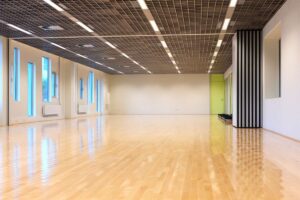 Do’s
Do’s
- Dry mop the floor daily to remove dust and debris.
- Use a diluted floor cleaner once or twice a week.
- Utilize floor covers during special events, fundraisers, or non-dance activities.
- Place walk-off mats outside studio entrances to minimize dirt and debris from being tracked in.
Don’ts
- Avoid heavy rolling loads—they can damage both the subfloor and finished floor. Equipment such as lighting lifts, stage setups, and pianos should be transported with proper protection, such as plywood or masonite sheets.
- Do not use overly alkaline cleaners, as they can erode the floor’s finish.
- Avoid using duct tape on performance floors—it pulls up the finish and can cause significant visual and structural damage.
- Do not overlook entryway protection—if space allows, create a mudroom, changing area, or designated walk-off mat zone to help preserve the floor.
Professional Maintenance Practices
For facilities with wood dance floors, a yearly screening and recoating process is recommended. This adds an additional layer of finish, protecting the wood and enhancing its longevity. Every 5–7 years, consider a full refinishing, which involves sanding the floor down and applying brand-new coatings. This process restores the floor’s appearance and extends its lifespan.
Endurance Flooring Can Help Preserve Your Dance Floors
Proper maintenance can mean the difference between a 10-year lifespan and a 30-year lifespan for a performing arts floor. Taking proactive steps not only protects the integrity of the floor but also enhances its visual appeal—an important factor in attracting dancers and students. Budgeting for annual maintenance and training staff on proper care will significantly increase the longevity of your dance floor.
If you have questions about maintaining your facility or need pricing for professional annual maintenance, contact Endurance Flooring today for expert guidance and support.

